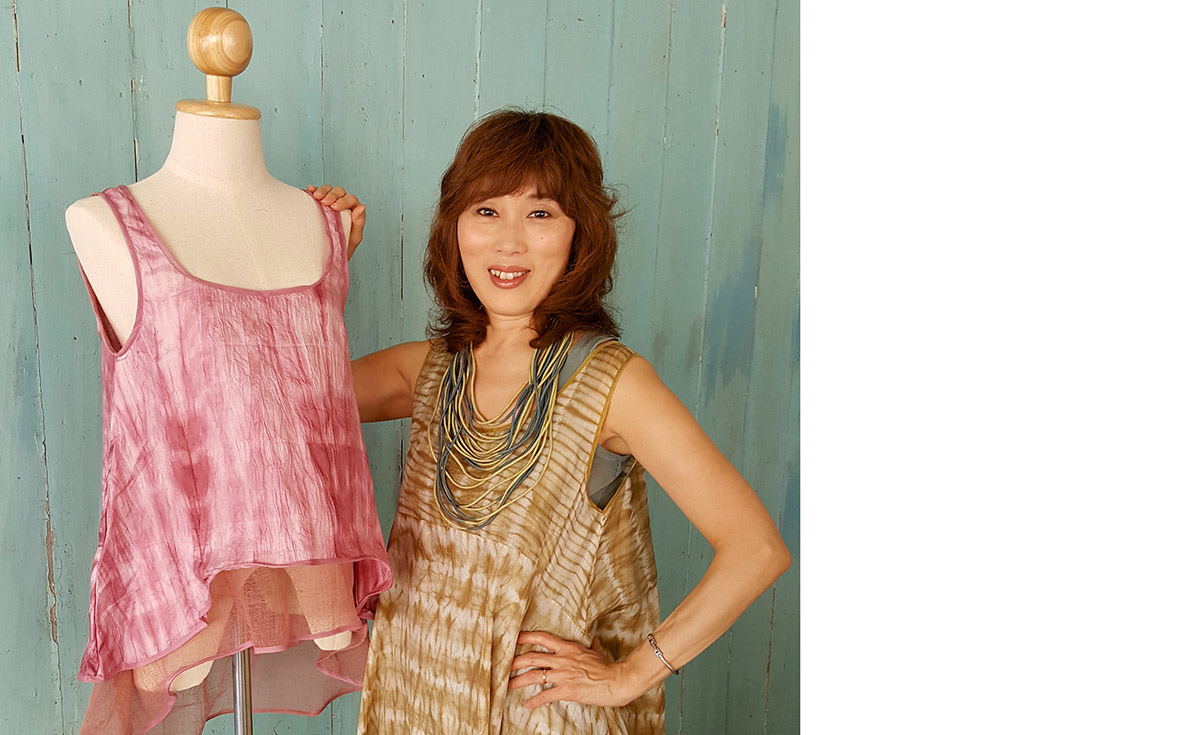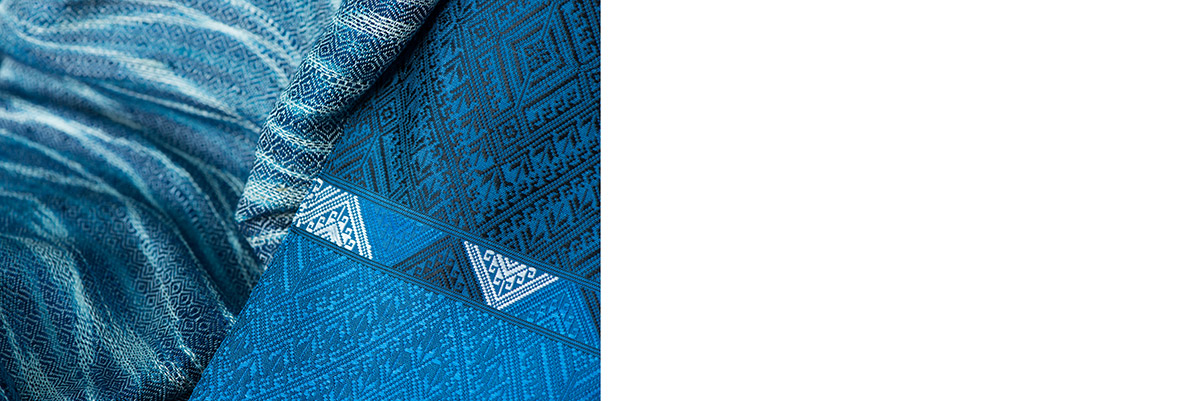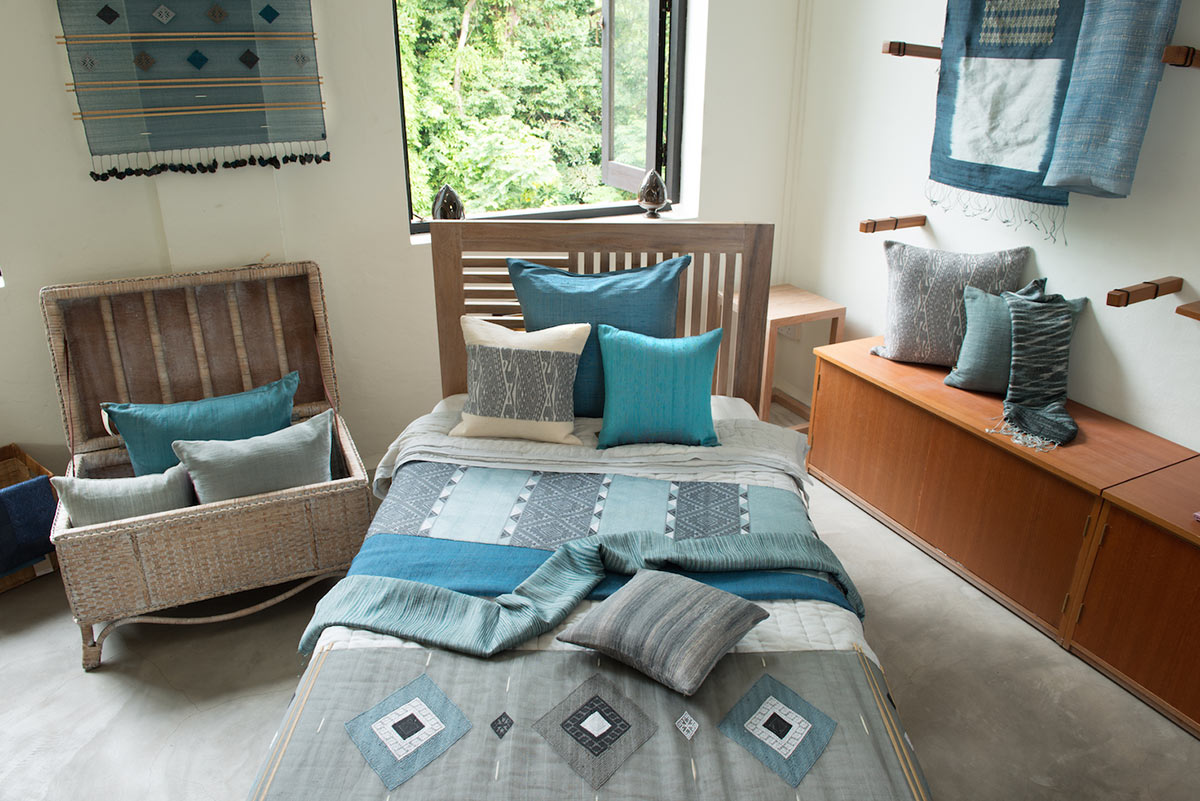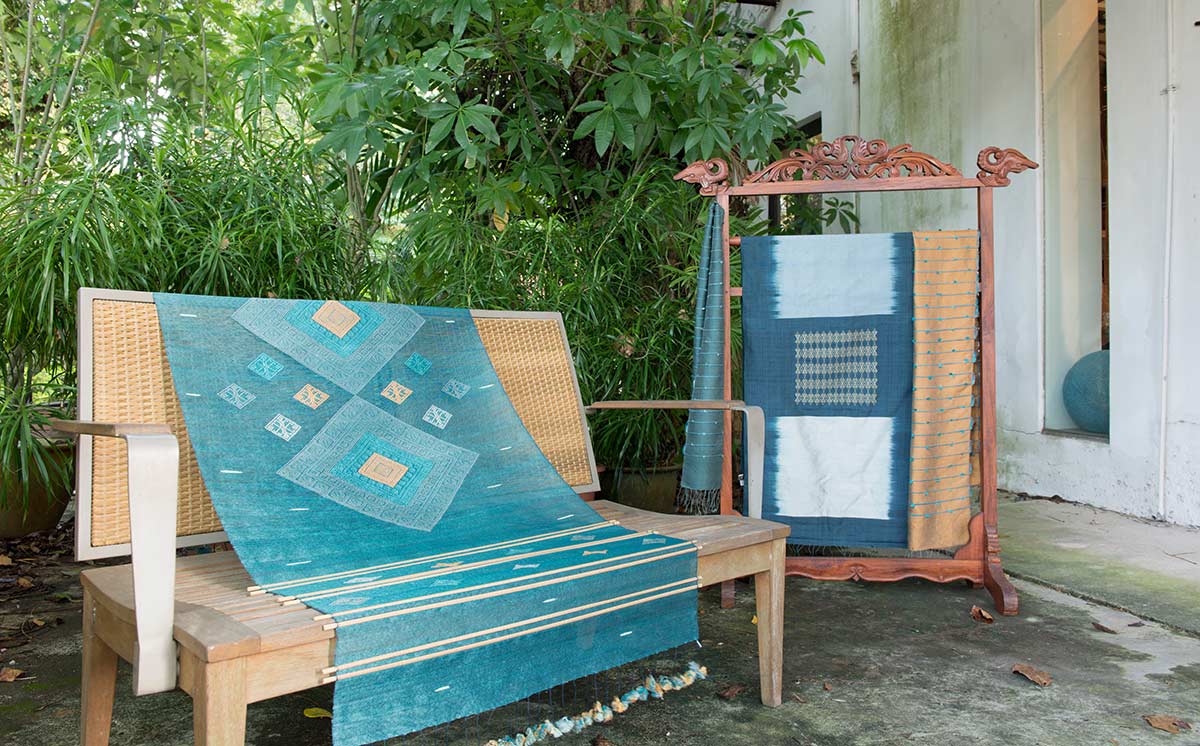We speak to Japanese designer, Emiko Nakamura of em gallery, about her unique textiles that weave tradition and modernity together.
What inspired you to establish em gallery and to interpret traditional Laotian and Cambodian weaving in a new way?
I used to collect textiles from my travels and I have a penchant for ethnic designs. My aesthetics are, however, very much influenced by modernity, perhaps because I was raised in Tokyo and spent years in England as a student. I see ethnicity through a very modern eye. And that was what I saw lacking in the textile industry in Southeast Asia, and even in Japan. I knew what I liked in textiles, such as patterns, colours, or textures, but I couldn’t quite find a piece to my complete liking. I am a very visual person. So I started thinking how I would produce the pieces myself and it grew from there.

Communications professional-turned-textile designer Emiko puts a modern spin on traditional Laotian and Cambodian weaving in her chic textiles.
Why did you decide to focus on Laotian and Cambodian weaving?
Laos is where I saw some of the best hand-weaving in the region. I was drawn to the natural dyeing they still undertake. I then saw their traditional woven cloths. I was so very impressed. Their skill in producing very fine intricate weaving using their traditional methods was beyond my expectations. In Cambodia, I have set up a different operation, which is to produce my clothing line. It is still textile-led, so all my clothes fabrics are hand-woven there. With clothes, we weave lighter and softer silks, either plain or tie-dyed later. We have tailors in Phnom Penh to make my clothing pieces.
Another reason why I focus on these two countries is that I do like what was once the “Indochina” region. The cultures and aesthetics were influenced during the French era and there is something romantic about it.

Emiko’s latest collection, Indigo Noir, features a low-key palette of grey, white and indigo.
What kinds of materials do you most like to work with, and why?
I love natural fibres. I know technology can do wonders for the fabrics, but I still love my natural fibres. In Laos and Cambodia, silk cultivation is their tradition, although Laos produces great quality cotton as well. I like to work with silk for various reasons. Silk’s absorbance of colours is superior to other natural fibres. Their lustre and fluidity as woven cloths are another reason. Modernity plays a key role in my output of collections and silk adds a sophistication to it all.
Where do you get inspiration for your designs and colour palettes?
I love travelling and that provides a main source of my inspiration. Some scenes capture my imagination and I get a sense of freedom when travelling. This further prompts me to explore and imagine… and to form a collection. I am drawn to the colours of nature – seascape, jungle, spices, etc. My colours are often muted and saturated. More importantly, I think my colour combinations are very unique, which can be seen both in textile and product design.

Emiko’s collections comprise of well-coordinated soft furnishings like cushion covers, bedspreads and even wall art.
What is you favourite home furnishings piece from you collection, and why?
I love them all! If must, I would choose two – woven wall-hanging tapestries for an absolute art piece, and pillows for a fun art piece. Each of my textile collections has a theme such as SeaStory and Botanica, and all pieces are designed to be coordinated together.
What can we expect from your next home furnishings collection?
I’m thinking “green” for my next collection. I have just launched our latest Indigo Noir, so I have yet to put together the next collection. In future, I am planning to do my home linens such as bed and table linen collections. My main focus is art and therefore I lean toward decorative pieces, but I would like to branch out to some home linen that carry my branding and can be used every day. That would be special.

Expect to find one-of-a-kind home furnishings in well-coordinated colour palettes at em gallery.
This was adapted from an article originally published in the February 2017 issue of SquareRooms.



